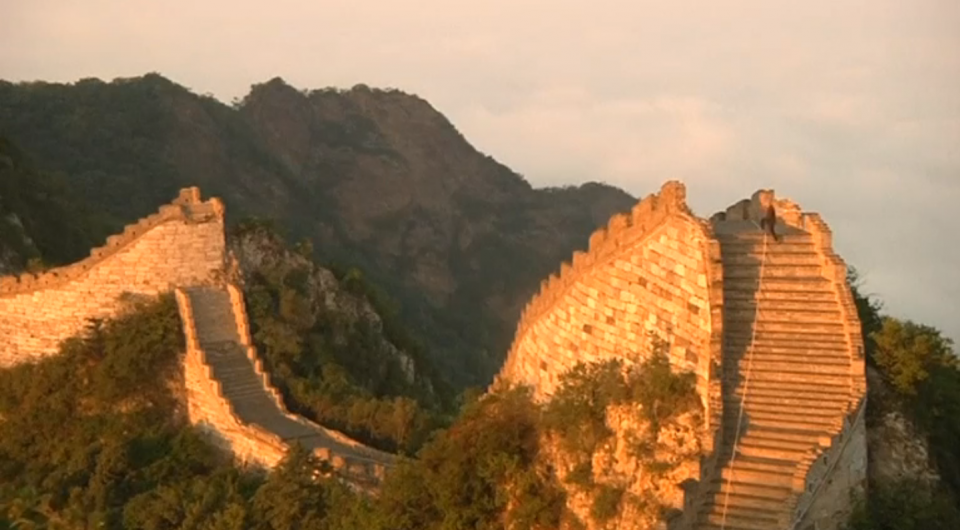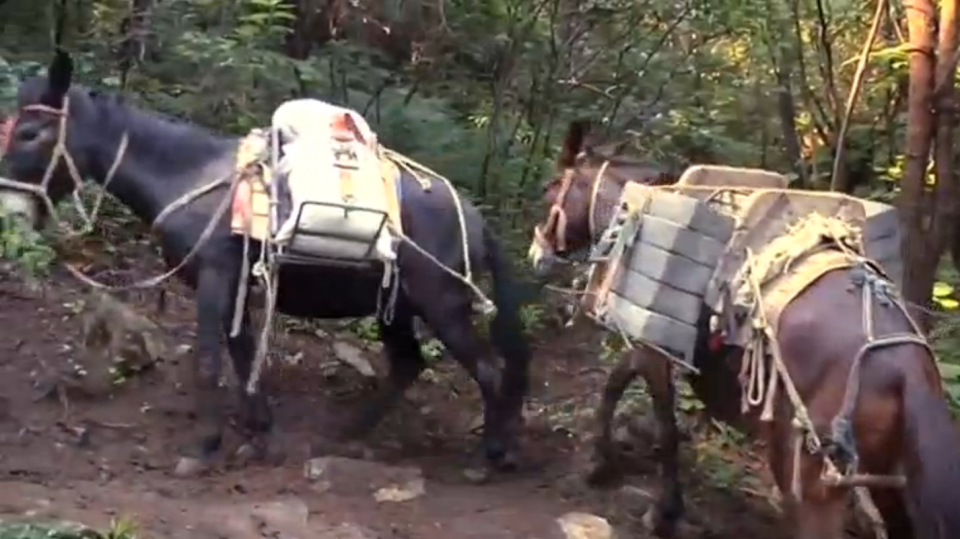
BEIJING, China (Reuters) – As the sun rises over one of the most dangerous and least-restored stretches of China’s Great Wall, a line of pack mules emerge from the gloom of a dense forest still draped in mist and dew.
Laden with 10-kilogram bricks, the seven mules pause, then move again as their masters coax them into action, keen to gain some altitude before the heat of the day sets in.
For more than a decade, mules have been instrumental in the restoration of Jiankou, a 1,000 meter-long section of the Great Wall notorious for its serpentine ridges and perilous slopes.

Local mule owner Cao Xinhua, who has worked on Great Wall restoration projects in the mountains north of Beijing for 10 years, said the path is too steep and the mountains too high for the workers, so the bricks can only be transported by mules.
Where they could, workers would use the original bricks that have broken free from the wall. Where they could find none, they would use bricks manufactured under very specific instructions.
Cheng Yongmao, the engineer in charge of Jiankou’s restoration, said the mules help carry bricks only up to a certain height, after which, workers have to bear the load.
Famed for its rugged beauty, Jiankou was built in the twilight years of the Ming dynasty in the 1600s. But Jiankou, which means an arrow’s nock in Chinese, is youthful by comparison with other sections constructed two millennia ago.
Led by the district government keen to preserve the natural beauty of the Wall and make its disintegrating steps safer, the Jiankou section has been under intensive repair.
Restoration first began in 2005, and is now in its third phase. Progress has been sure but slow, as only basic tools can be used in such uneven terrain.
The meticulous approach taken by the local authorities comes after botched efforts to restore some stretches of the Wall sparked widespread outrage last year.
Authorities in the northeastern province of Liaoning removed all the battlements in a section of the wall and paved the ramparts with sand and cement. The end-result looks more like a pedestrian pavement, critics say.
Soon after the disaster restoration, the State Administration of Cultural Heritage said it would investigate any Wall preservation projects that were being improperly executed.
There is still much to be done. Vice President of the Great Wall Association, Dong Yaohui, estimates that only 10 percent of the Wall built during the Ming dynasty has been repaired.
The remainder has either crumbled over the centuries or are in the verge of oblivion.








